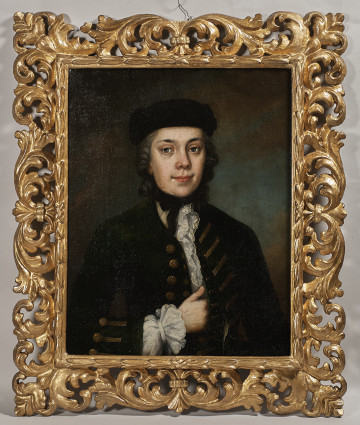
Portrait of Aleksandra Potocka, née Lubomirska
2nd half of the 19th century
Castle Museum in Łańcut
Part of the collection: Varia
Dactyliotheque is a term combining two Greek words: daktylios – ring, precious stone; theke – casket. The ancient meaning of dactyliotheque referred to a casket of valuables and then, in modern times, it began to be used for describing a set of gems. Gems (from the Roman word gemma – stone) were precious or semi-precious stones in an oval or round shape, decorated with a relief, i.e., a sculpture on a flat surface with a visible background. Reliefs divided into two kinds: convex or concave and, depending on this, a different terminology was used. From the 18th century, when art collections, including antiquities, were created and systematised, dactyliotheque became a term defining a set of impressions of ancient gems (or their subsequent copies). Because of their small size, impressions made it possible to collect a large iconographic documentation of ancient art in small indoor forms that occupied a relatively small space or were incomparably less expensive than original works of art. Stanisław Kostka Potocki – the author of the first Polish work on the history of art ‘On the art of the ancient, or Polish Winckelmann’ and the founder of the Wilanów Museum – had a collection of impressions of ancient gems and used it for research. The presented Wilanów dactyliotheque bound in the form of a book was purchased and added to the Museum as a supplement to the exhibition concerning 18th-century art collections. The set consists of four drawers set in a cardboard box bearing an inscription: ‘Mythologische Dacthyliotec von Klausing’. Anton Ernst Klausing (1739–1803) was a Leipzig professor of antiquities and philosophy and the author of a mythological dactyliotheque issued by Leipzig antiquarian Christian Heinrich Rost (1742–1798) in 1781, the aim of which was to ‘support the development of knowledge and taste of young people studying humanities and visual arts’. (M. Zając, Mythological dactyliotheque, https://www.wilanow-palac.pl/daktylioteka_mitologiczna.html). In the Wilanów collection, we can find 117 original red impressions as well as two secondarily added impressions from green mass and an agate cameo set in gold.
Author / creator
Dimensions
entire object: height: 23,0 cm, width: 17,8 cm
Technique
cast,sculpture,gilding
Material
cardboard,paper,agate,gold
Owner
Museum of King Jan III's Palace at Wilanów
Identification number
Location / status

2nd half of the 19th century
Castle Museum in Łańcut

3. ćwierć XVIII wieku
Castle Museum in Łańcut

1. ćwierć XIX wieku
Castle Museum in Łańcut
DISCOVER this TOPIC
National Museum in Lublin
DISCOVER this PATH
Educational path